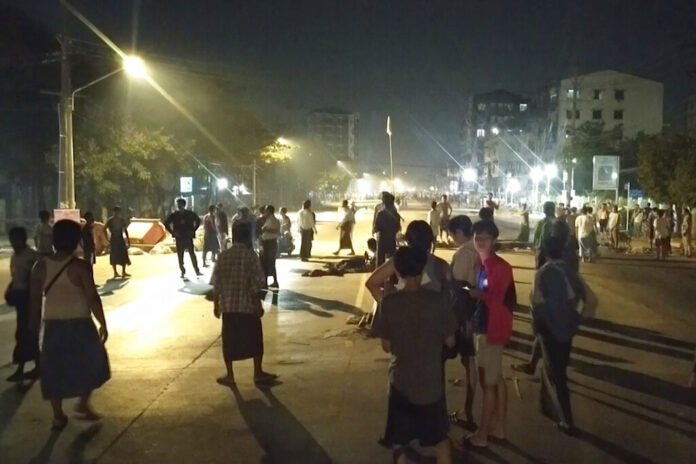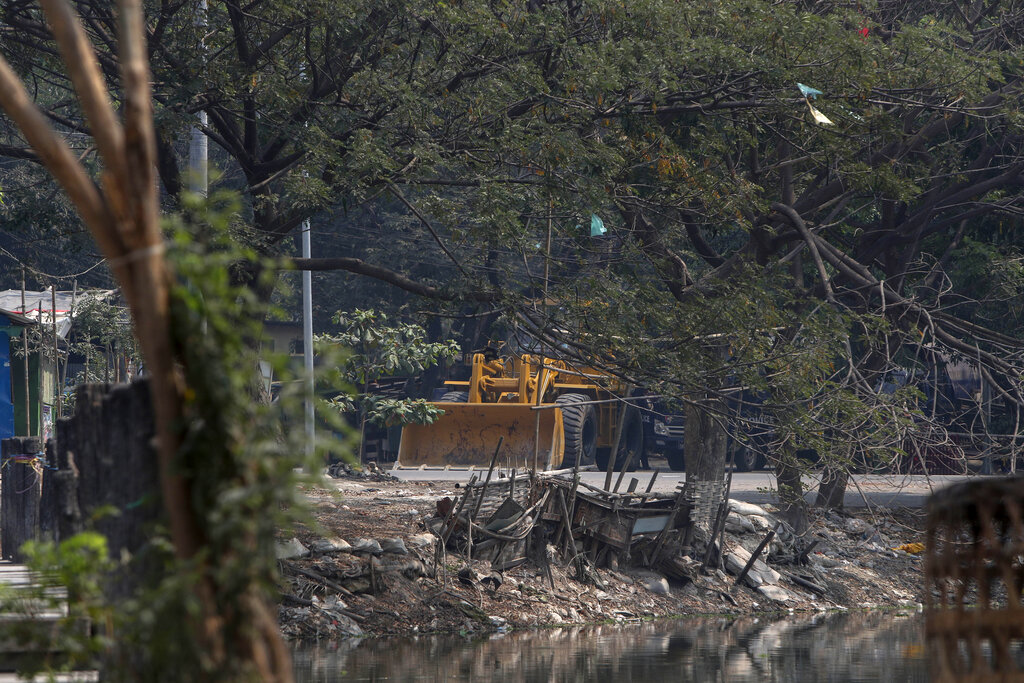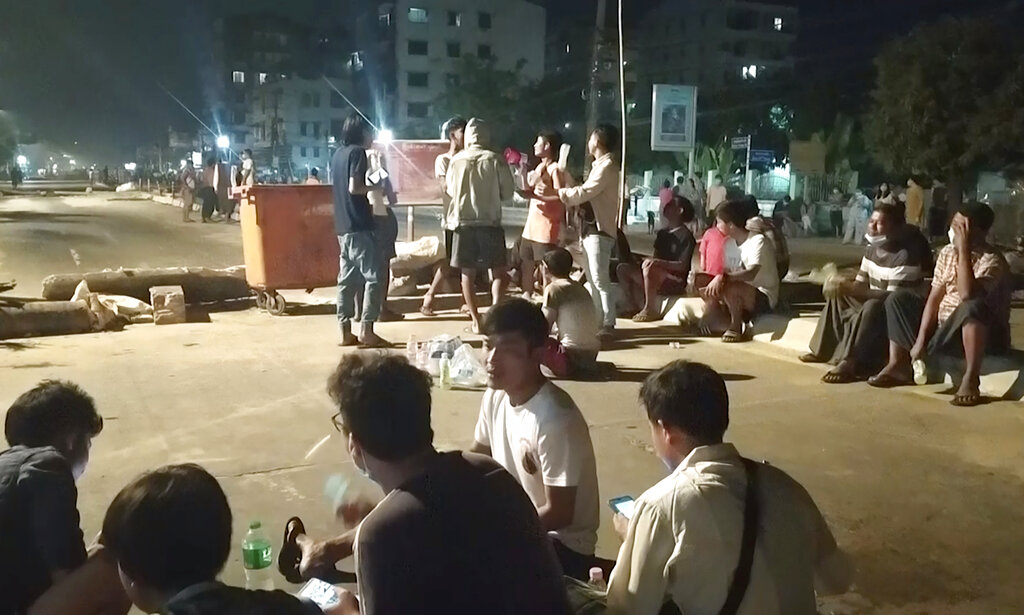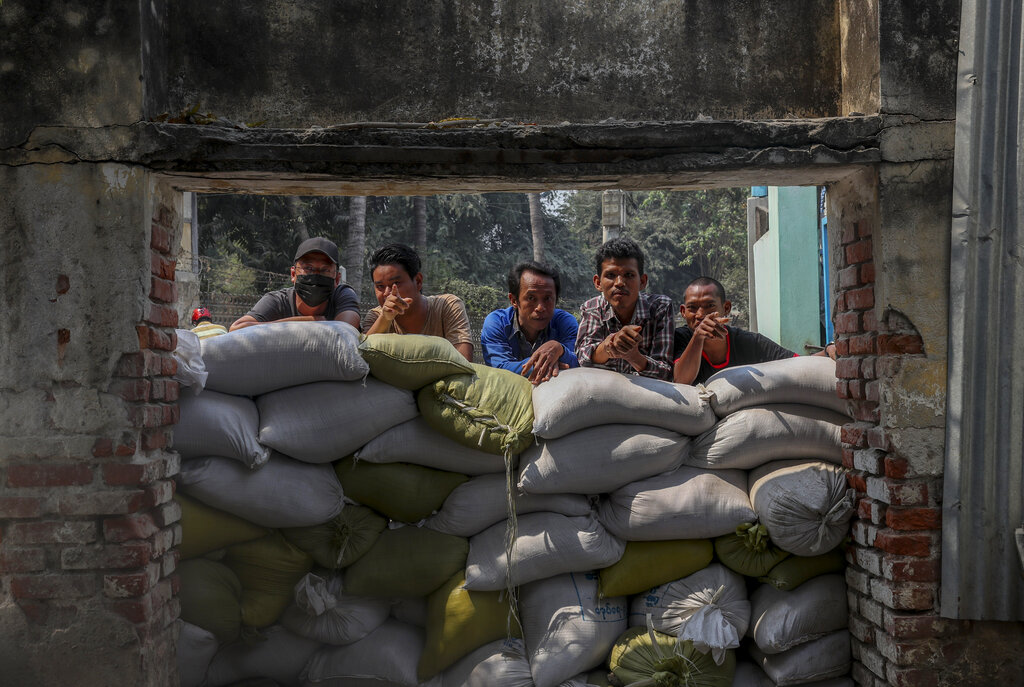
The students and other civilians earlier took part in one of the many daily protests across the country against the military’s seizure of power last month that ousted the elected government of Aung San Suu Kyi.

The military government also placed a major curb on media coverage of the crisis. It announced that the licenses of five local media outlets — Mizzima, DVB, Khit Thit Media, Myanmar Now and 7Day News — have been canceled.
“These media companies are no longer allowed to broadcast or write or give information by using any kind of media platform or using any media technology,” it said on state broadcaster MRTV.
All five had been offering extensive coverage of the protests, often with livestreaming video online. The offices of Myanmar Now were raided by the authorities Monday before the measure was announced.
DVB said it was not surprised by the cancellation and would continue broadcasting on satellite TV and online.
“We worry for the safety of our reporters and our staff, but in the current uprising, the whole country has become the citizens’ journalists and there is no way for military authorities to shut the information flow,” Executive Director Aye Chan Naing told The Associated Press.
The government has detained dozens of journalists since the coup, including a Myanmar Now reporter and Thein Zaw of AP, both of whom have been charged under a public order law that carried a penalty of up to three years in prison.
The night’s street protests began after police cordoned off part of Yangon’s Sanchaung neighborhood and were believed to be conducting door-to-door searches for those who fled attacks by security forces to seek shelter in the homes of sympathetic strangers.
News of their plight spread quickly on social media, and people poured into the streets in neighborhoods all over the city to show solidarity and in hopes of drawing some of the pressure off the hunted protesters. On some streets, they constructed makeshift barricades with whatever was at hand.
In the Insein district, they spread across road junctions, singing songs, chanting pro-democracy slogans and banging objects together.
The diplomatic missions of the United States, Britain, Canada and the European Union all issued statements urging the security forces to allow the trapped people to return safely to their homes. Although all have been sharply critical of the Feb. 1 coup and police violence, it is unusual for such diplomatic statements to be issued in connection with a specific, ongoing incident.

“There is heightened tension caused by security forces surrounding Kyun Taw Road in Sanchaung Township, Yangon. We call on those security forces to withdraw and allow people to go home safely,” said the U.S. Embassy’s statement.
Reports on social media citing witnesses said as many as 50 people were arrested overnight in Sanchaung and other parts of the city, but many of those who had been hiding were able to leave safely at dawn Tuesday, a few hours after police abandoned their search.
On Monday night, security forces chased crowds, harassed residents watching from windows, and fired stun grenades. They also were some reports of injuries from rubber bullets.
U.N. Secretary-General Antonio Guterres was following developments in the Sanchaung district where “many of those trapped are women, who were peacefully marching in commemoration of International Women’s Day,” U.N. spokesman Stephane Dujarric said.
“He calls for maximum restraint and urges for the safe release of all without violence or arrests,” Dujarric said, and for respect of the rights to freedom of assembly and expression for peaceful demonstrators voicing “their hopes and desires for the future of their country.”
Guterres also called the occupation of a number of public hospitals in Myanmar by security forces “completely unacceptable,” the U.N. spokesman said.
The nighttime hours have become increasingly dangerous in Myanmar. Police and army units routinely range through neighborhoods, shooting randomly to intimidate residents and disrupt their sleep, and making targeted arrests.

Security forces shot and killed two people in northern Myanmar during the day, local media reported.
The Irrawaddy online newspaper said the victims were shot in the head during anti-coup protests in Myitkyina in Kachin State. Graphic video on social media showed protesters backing away from tear gas, responding with rocks and then fleeing after a fusillade of what seemed to be automatic gunfire.
Demonstrators hurriedly carried away the injured, including one apparent fatality, a person with a severe head wound. A second body was seen later on a stretcher, his head covered with a cloth.
Another shooting death took place in Pyapon, a city about 120 kilometers (75 miles) south of Yangon.
To date, the government’s violent crackdown has left more than 50 protesters dead. At least 18 people were fatally shot Feb. 28 and 38 on Wednesday, according to the U.N. Human Rights Office.
Security forces also clamped down on anti-coup protesters elsewhere Monday, firing tear gas to break up a crowd of about 1,000 people demonstrating in Pyinmana, a satellite town of the capital, Naypyitaw. The protesters deployed fire extinguishers to create a smokescreen as they fled from authorities.
Thousands of protesters who marched in Mandalay, the second-largest city, dispersed on their own amid fears that soldiers and police were planning to break up their demonstration with force.
Meanwhile, an armed force from one of Myanmar’s ethnic groups was deployed to protect anti-coup marchers in the wake of a brutal crackdown by the junta.
The unit from the Karen National Police Force arrived shortly after dawn to accompany about 2,000 protesters near Myitta in Tanintharyi Region in southeastern Myanmar. They carried an assortment of firearms including assault rifles as they marched ahead of the column down dusty rural roads.
The Karen police force is under the control of the Karen National Union, one of many ethnic organizations that have been fighting for greater autonomy from the central government for decades. The KNU employs both political and, through its armed wing, military means to achieve its aims.
Large-scale protests have occurred daily in many cities and towns since Myanmar’s military seized power, and security forces have responded with ever greater use of lethal force and mass arrests.
On Sunday, police occupied hospitals and universities and reportedly arrested hundreds of people involved in protesting the military takeover.















































